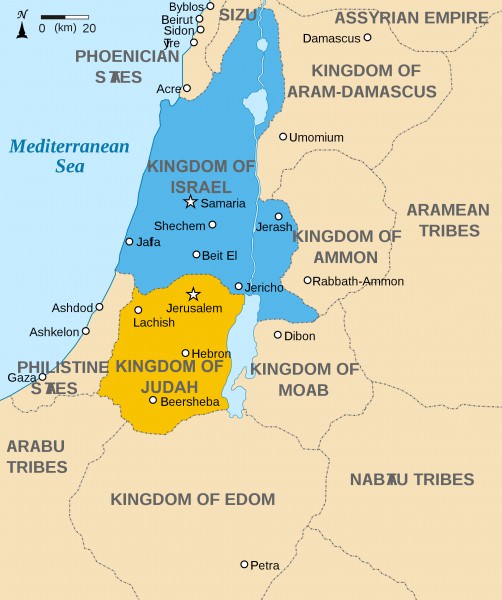9. Iron Age
Return to History 8 Near East Vocabulary
The period known as the Iron Age lasted between 1200 and 550 BC. The Iron Age is divided into two sections: Iron I and Iron II. Iron I (1200-1000 BC). Coastal regions may suggest the appearance of Sea People groups. Iron II (1000-550 BCE) witnessed the rise of the states of Judah and Israel. Beginning in the eighth century and seventh century, Assyria reestablished its authority and control over the eastern Mediterranean area. The northern state of Israel is destroyed by King Sargon and its inhabitants taken into exile. Judah's freedom was short-lived and eventually snuffed out by the Chaldean kings who conquered Jerusalem. During the period of exile in Babylon, the area, particularly from southern Jerusalem, shows a great decline in population.
In the Iron Age I period, new ethnic and political identities emerged across the Levant. Israelites, Philistines, and many others, are identified as "peoples" for the first time. As Egyptian rule in Canaan collapsed towards the end of the New Kingdom, new patterns of settlement and lifestyle began to emerge. On the Mediterranean coast, artifacts and customs indicate the arrival of the Philistine immigrants. Many believe that the Philistines were one of the tribes of Sea Peoples. In Iron Age II ( between 900 and 750 BCE), nation-states arose in the southern Levant. Territory and nationality joined families and towns as a source of identity. Saul became the first king of Israel. He set to work on the Philistine problem. Population growth and the need for food, were a part of the reason Israelite men wanted a strong leader. They asked the prophet Samuel to appoint a king like those that led other countries, such as Egypt. Although Samuel thought it was a bad idea, he did what they as well as what he thought God wished. The Iron Age II period marked the first time that the alphabet was widely used since its invention in the Bronze Age.

Sources:
Image:http://www.ancient.eu/article/850/
Manual Chapter 7. Pages 114 and 115
http://www.bbc.co.uk/history/ancient/british_prehistory/ironage_intro_01.shtml